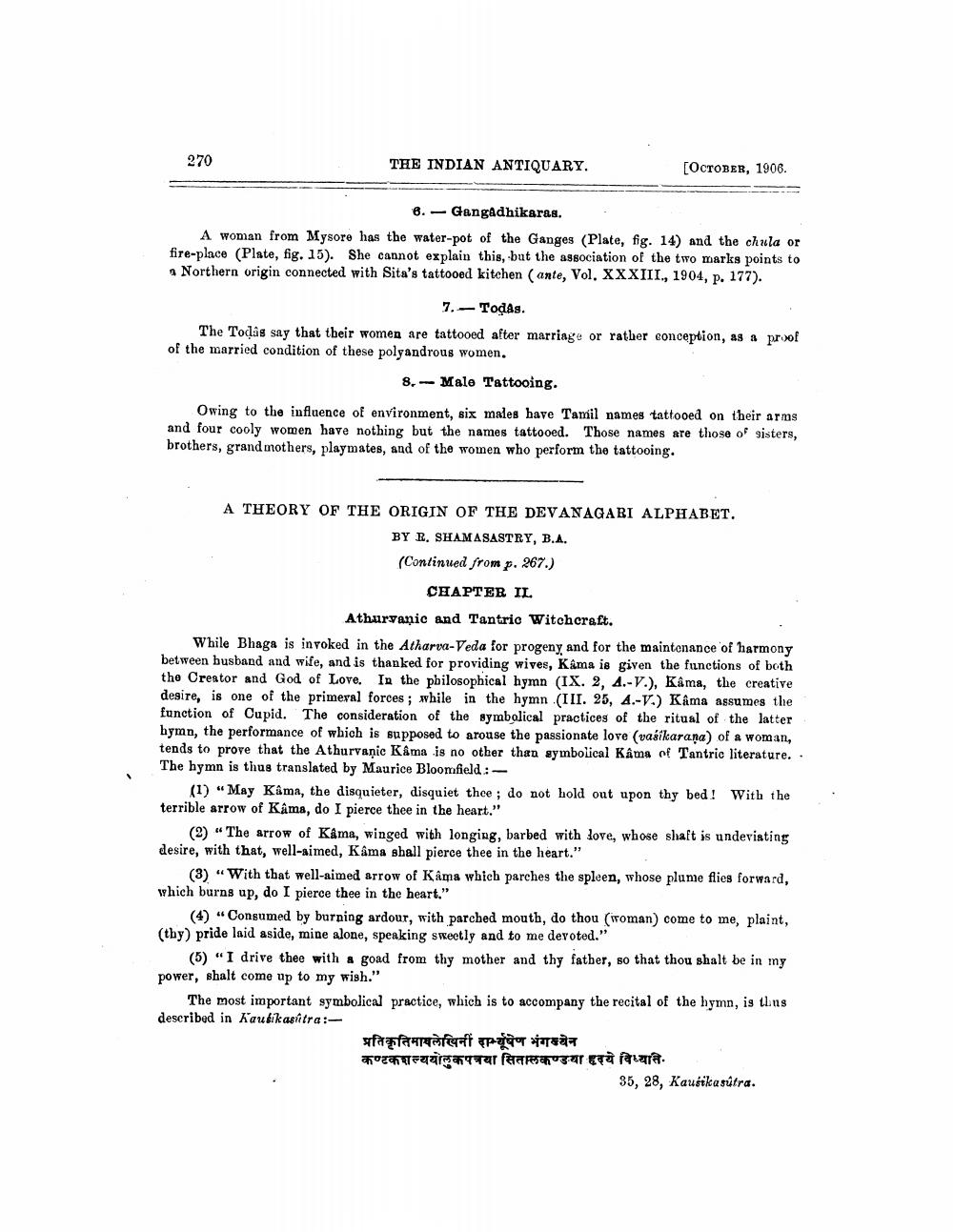________________
270
THE INDIAN ANTIQUARY.
[OCTOBER, 1906.
6.- Gangadhikaras. A woman from Mysore has the water-pot of the Ganges (Plate, fig. 14) and the chula or fire-place (Plate, fig. 15). She cannot explain this, but the association of the two marks points to a Northern origin connected with Sita's tattooed kitchen (ante, Vol. XXXIII., 1904, p. 177).
7.- Todas. The Todas say that their women are tattooed after marriage or rather conception, as a proof of the married condition of these polyandrous women.
8.- Male Tattooing.
Owing to the influence of environment, six males have Tamil names tattooed on their arms and four cooly women have nothing but the names tattooed. Those names are those of sisters, brothers, grandmothers, playmates, and of the women who perform the tattooing.
A THEORY OF THE ORIGIN OF THE DEVANAGABI ALPHABET.
BY R. SHAMASASTRY, B.A. (Continued from p. 267.)
CHAPTER IL
Athurvanic and Tantric Witchcraft. While Bhaga is invoked in the Atharva-Veda for progeny and for the maintenance of harmony between husband and wife, and is thanked for providing wives, Kama is given the functions of both the Creator and God of Love. In the pbilosophical hymn (IX. 2, A.-V.), Kâma, the creative desire, is one of the primeral forces; while in the hymn (III. 25, 4.-V.) Káma assumes the function of Cupid. The consideration of the symbolical practices of the ritual of the latter hymn, the performance of which is supposed to arouse the passionate love (vašikarana) of a woman, tends to prove that the Athurvanic Kamais no other than symbolical Kâma of Tantric literature.. The hymn is thus translated by Maurice Bloomfield :
(1) May Káma, the disquieter, disquiet thee; do not hold ont upon thy bed! With the terrible arrow of Kâma, do I pierce thee in the heart."
(2) "The arrow of Káma, winged with longing, barbed with love, whose shaft is undeviating desire, with that, well-aimed, Kama shall pierce thee in the heart."
(3) “With that well-aimed arrow of Kama which parches the spleen, whose plume flies forward, which burns up, do I pierce thee in the heart."
(4) “Consumed by burning ardour, with parched mouth, do thou (woman) come to me, plaint, (thy) pride laid aside, mine alone, speaking sweetly and to me devoted."
(5) "I drive them with a goad from thy mother and thy father, so that thou shalt be in my power, shalt come up to my wish."
The most important symbolical practice, which is to accompany the recital of the hymn, is thus described in Kaubikasitra:
प्रतिकृतिमायलेखिनी दायूंषेण भंगक्वेन कण्टकशल्ययोलुकपचया सितालकण्डया हदये विध्यति.
35, 28, Kausika sútra.




